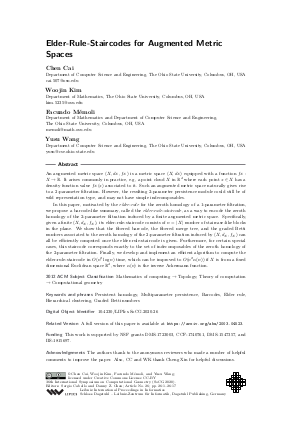LIPIcs.SoCG.2020.26.pdf
- Filesize: 0.97 MB
- 17 pages

 Creative Commons Attribution 3.0 Unported license
Creative Commons Attribution 3.0 Unported license




















Feedback for Dagstuhl Publishing